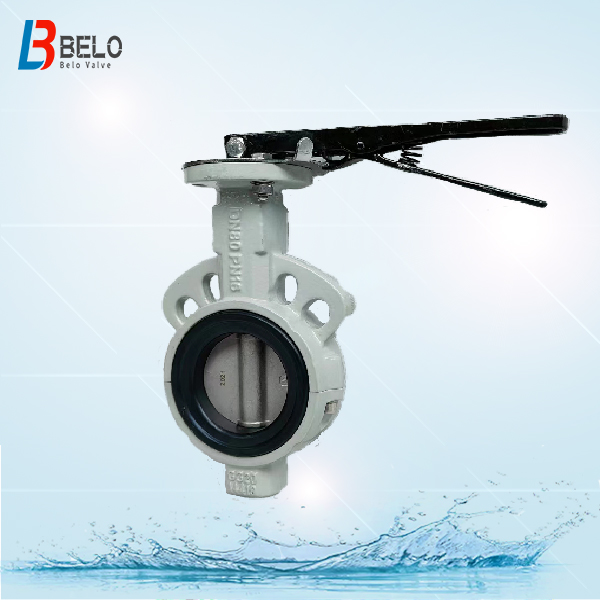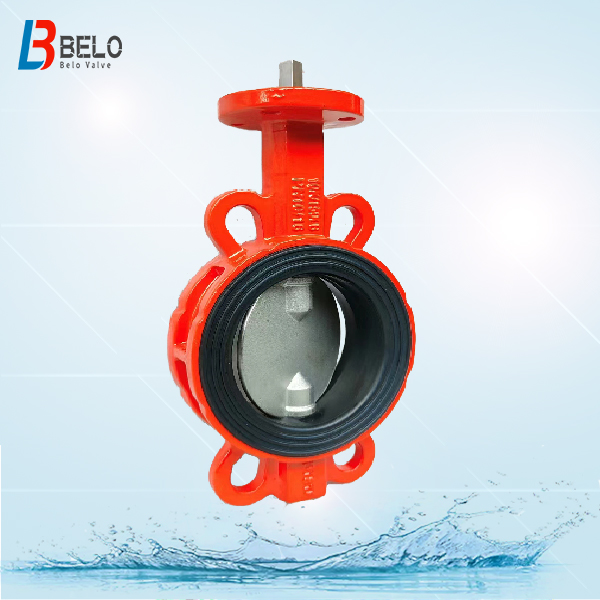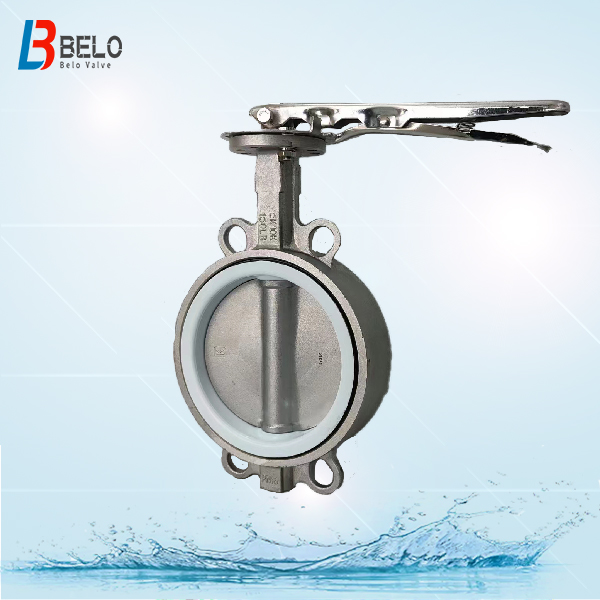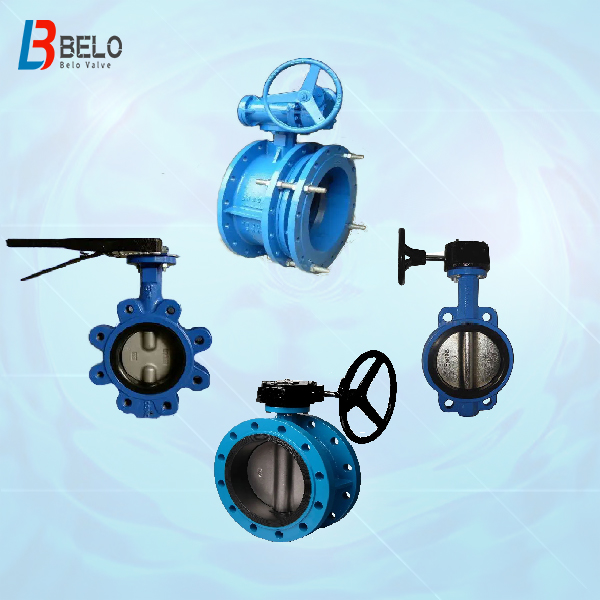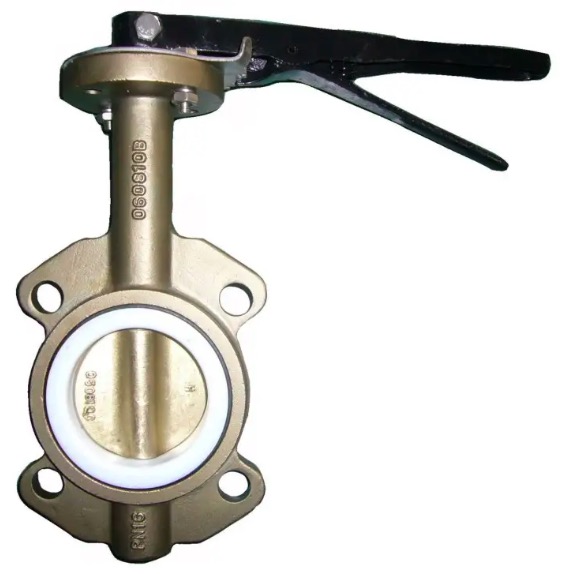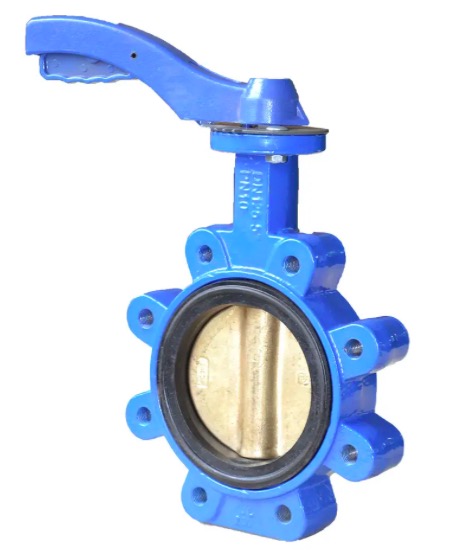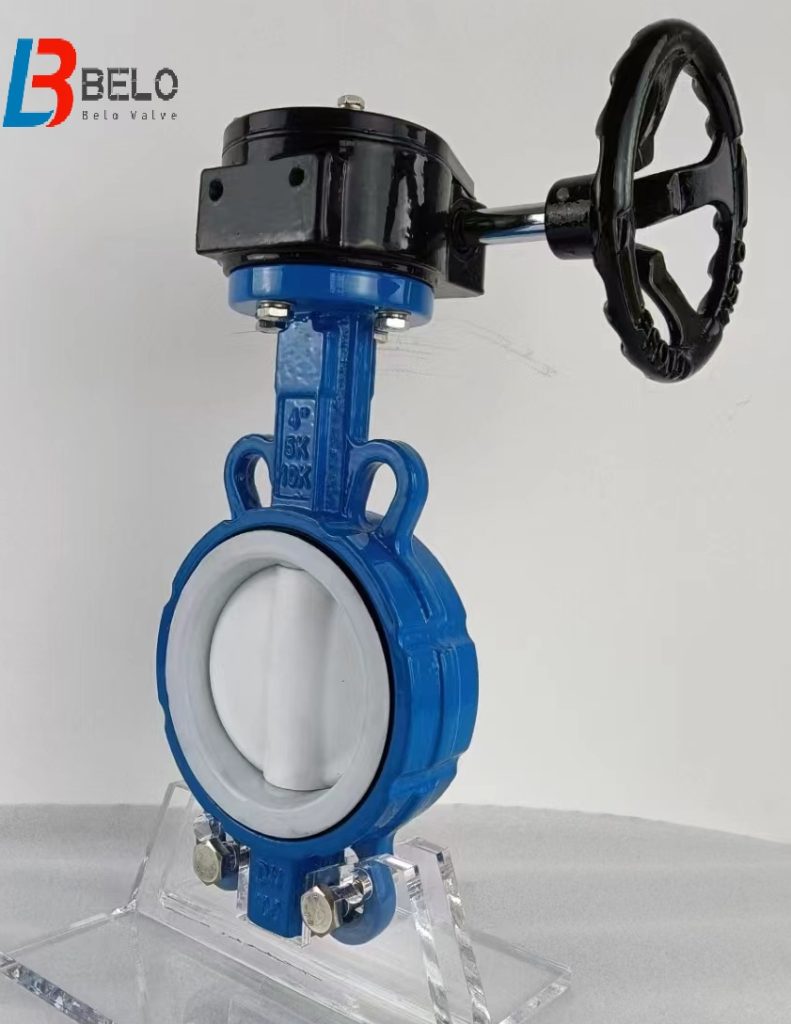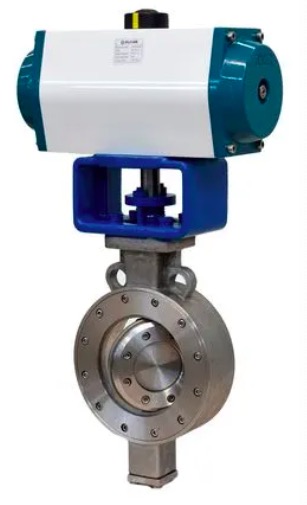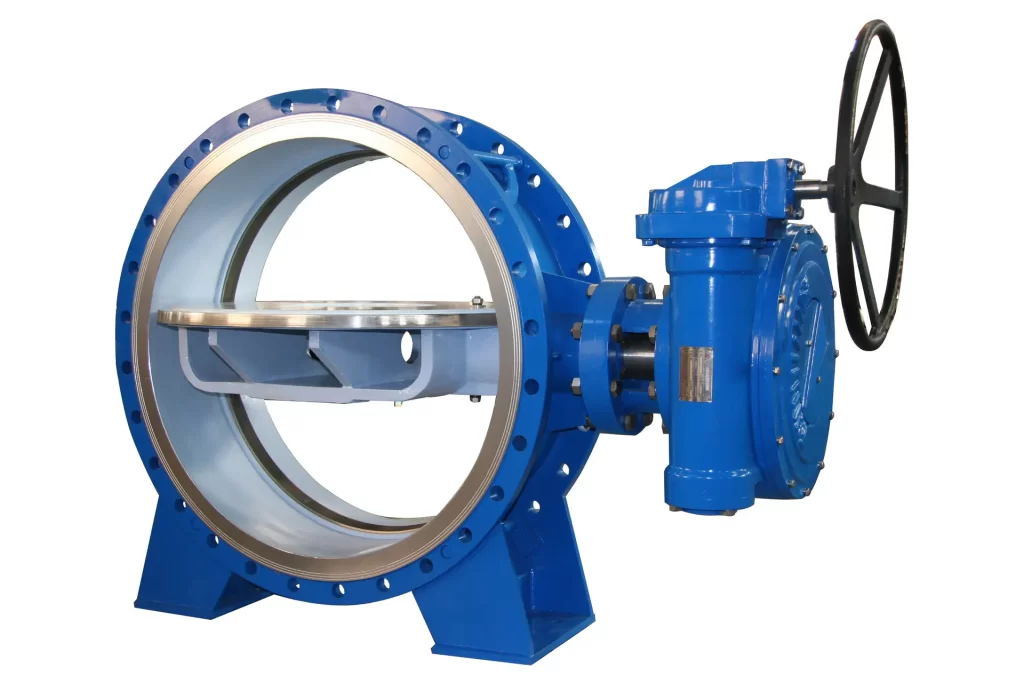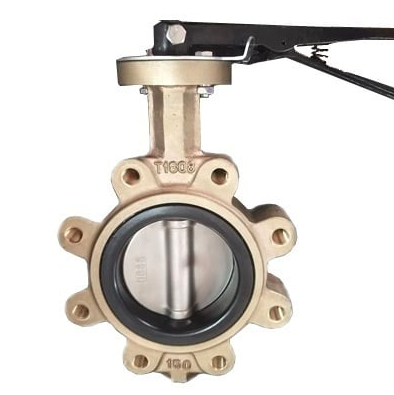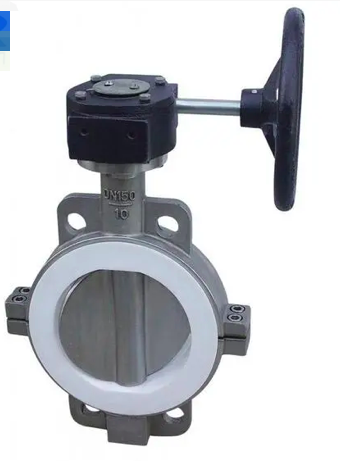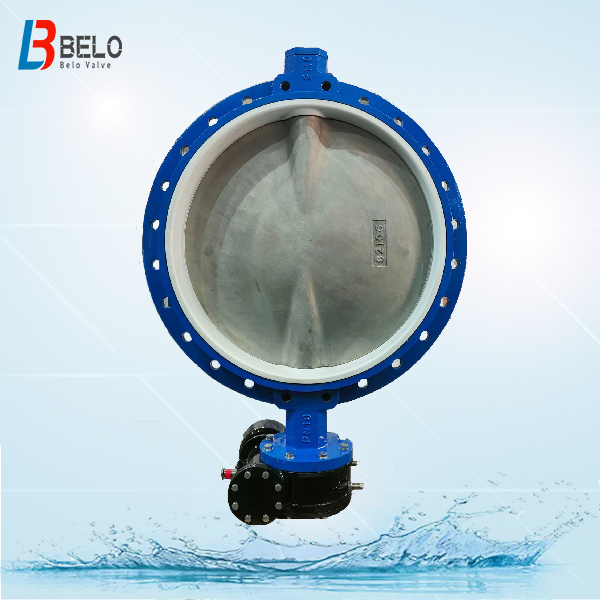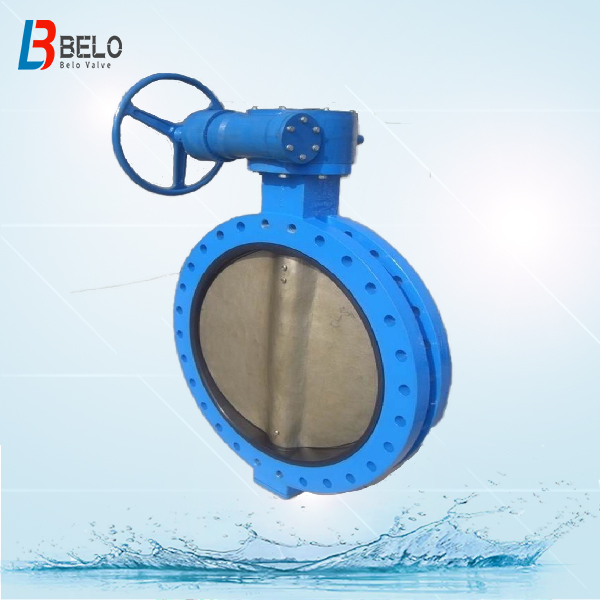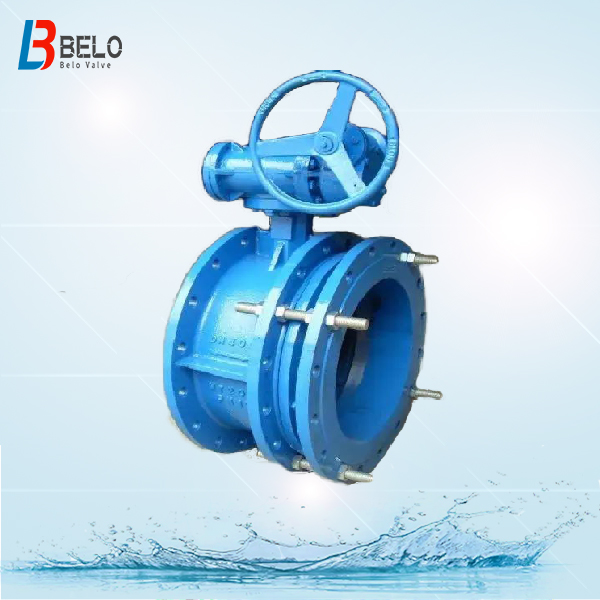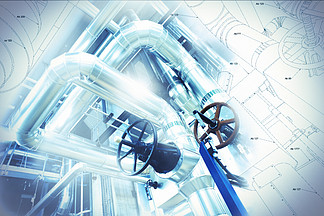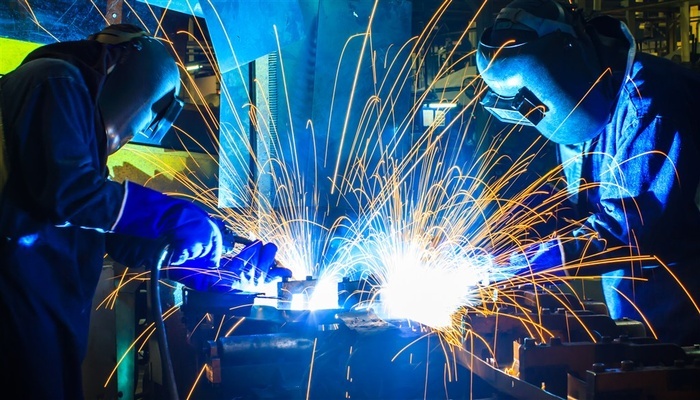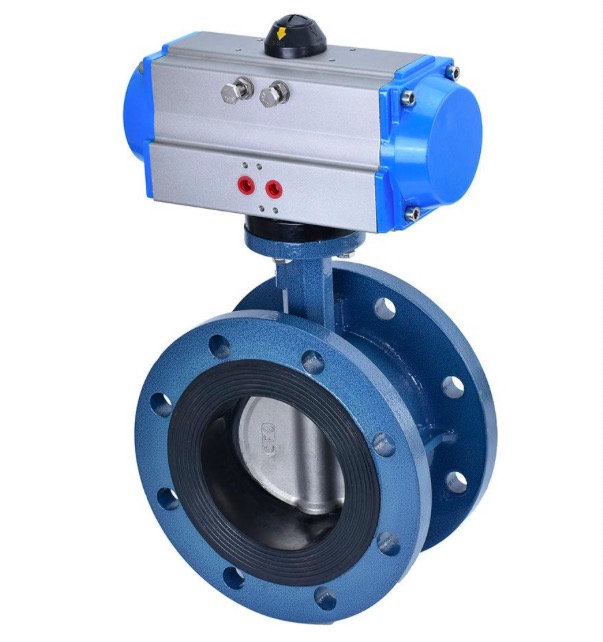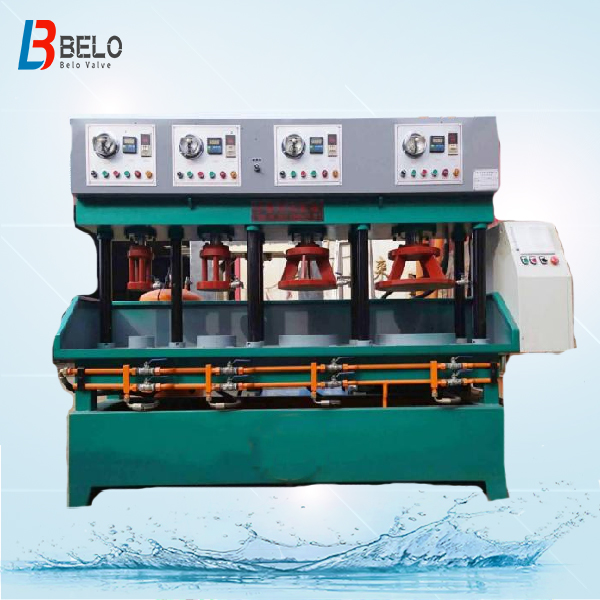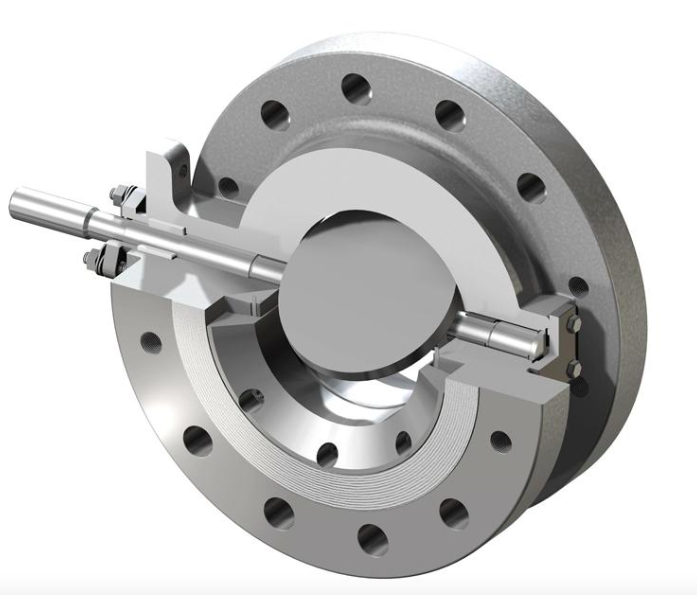Butterfly valve is one kind of regulating valve with simple structure. Butterfly valve that can be used for on-off control of low pressure pipeline medium means that the closing part(disc or butterfly plate) is a disc, which rotates around the valve shaft to achieve opening and closing of the butterfly valve. Butterfly valve can be used to control the flow of various types of fluids such as air, water, steam, various corrosive mediums, mud, oil, liquid metal and radioactive mediums, which mainly plays the role of cutting and throttling on the pipeline. The opening and closing part of butterfly valve is a disc-shaped butterfly plate, which rotates around its own axis in the valve body to achieve the purpose of opening and closing or adjustment.
There are many types of butterfly valves which are widely used in our pipeline systems, like we have wafer butterfly valves, center line butterfly valves, API 609 lug type butterfly valves, soft seal butterfly valves, metal hard seal butterfly valves, flange butterfly valves, single eccentric butterfly valves, double eccentric butterfly valve, triple eccentric butterfly valves, manual butterfly valves, electric butterfly valves, pneumatic butterfly valves, even hydraulic butterfly valves, today we are going to talk about among those various butterfly valves, how to decide which type of butterfly valve is the best for our pipelines.
The selection of butterfly valve should first depends on the successful engineering practice, relevant laws and regulations to select the appropriate structure,material and pressure level of butterfly valves, which can ensure the safety and reliability of the butterfly valves.
1. How to select the structure of butterfly valve:
According to the structure, butterfly valve can be divided into center line butterfly valve, single eccentric butterfly valve, double eccentric butterfly valve, triple eccentric butterfly valve.
1.1. the flow characteristics of the butterfly valve are approximately linear, and the difference between the center line butterfly valve and the eccentric type butterfly valve is not very large, the center line type butterfly valve is suitable for regulating valve and small diameter process valves.
1.2. for double eccentric butterfly valve and triple eccentric butterfly valves, how to decide which one should be selected? These two structures both have the characteristics that they can be quickly disengaged and the more it close, the tighter it is. Then it is important to know how to tell which one should be selected for some specific working conditions:
If one soft seal butterfly valve is using double eccentric structure, it is more convenient in processing and manufacturing. However the processing and manufacturing of triple eccentric structure is more complicated, but its characteristics of that the more it close, the tighter it is is more prominent, and for triple eccentric structure butterfly valve, it is not easy to cause interference, so triple eccentric structure is more suitable for metal hard sealing.
At present, there is no comprehensive analysis on the market to show that it is wrong to recommend the use of triple eccentric metal hard sealing butterfly valve under any circumstances. Especially for large diameter normal temperature water systems, and it is not necessary to use the triple eccentric metal hard seal butterfly valve here. Because the metal hard sealing ring is much more difficult to replace than the soft sealing ring, so the butterfly valve which is large diameter and is used for hydraulic pipelines should use the soft sealing ring. Only when it is inconvenient for maintenance and replacement, and there are high temperature and harsh working conditions, metal hard sealing triple eccentric butterfly valve are used as a last resort. In order to facilitate the replacement of the metal hard sealing ring under severe working conditions, the valve body of the butterfly valve is generally extended for a external section, and a middle opening is made to facilitate the removal of the sealing ring.
1.3. how to select a vacuum butterfly valve: for vacuum butterfly valve, there are two type: rubber soft sealing vacuum butterfly valve and metal hard sealing vacuum butterfly valve. In terms of structure, vacuum butterfly valve can be divided into center line vacuum butterfly valve, eccentric vacuum butterfly valve and lever type vacuum butterfly valve. For those requiring high vacuum level, soft sealing vacuum butterfly valve is used. If a certain temperature is required, the metal hard sealing vacuum butterfly valve must be used. In order to get a good effect, the surface that can be processed should be processed, and have good surface roughness and cleanliness. Paint and general anti-rust oil cannot be applied, only vacuum grease is allowed.
2. how to select the diameter of butterfly valve:
The selection of the diameter of butterfly valve is mainly determined by the medium, flow quantity or flow rate flowing through the butterfly valve.
For liquids, the general flow velocity should not exceed 5m/s, and the maximum should not exceed 7-8m/s. Usually: the economical flow rate of water is 2-3m/s, the low pressure gas flow rate is recommended 2-10m/s, the medium pressure gas flow rate is recommended 10-20m/s; for the steam flow rate, the low pressure steam is recommended 20-40m/s, the medium pressure steam is 40-60m/s, high pressure steam 60-80m/s.
Of course, sometimes in order to reduce the pressure loss, the valve diameter is selected to be larger, so that the flow rate is lower, but if you want to adjust at a small flow rate, you cannot do this.
The phenomenon of rapid evaporation and re condensation of a liquid flowing through an area of very low absolute pressure in a very short period of time, is called cavitation, cannot occur in a gas flow,because the state of the gas under low pressure will not change. When the fluid flows into an area of higher pressure, the vapor will suddenly condense and the bubble will collapse or burst. The flow velocity of this burst may reach 110m/s and high pressure of 50Mpa, causing impact damage to the wall. In order to avoid cavitation, some measures should be taken.
① DO Not allow the flow rate to be too great to create such a low pressure.
② introduce the atmosphere into the low pressure area.
③ Decrease the pressure difference ΔpT≤FL2(p1-pVC), where pVC represents the pressure on the systolic flow section that produces the occlusion flow.
When the pressure difference on the valve is p<1.5MPa, even if cavitation occurs, the damage to the material is not serious, so no special measures are required.
Considering from the material, generally speaking, the harder the material is, the stronger the cavitation resistance is.
when the butterfly valve does not produce cavitation, the general cavitation coefficient σ≥2.5.
3. how to select the butterfly valve material:
The main body material of the butterfly valve should be determined according to the properties of the medium, the working temperature and the flow conditions(whether there are particles, two phase flow,etc). under normal circumstances, the user is required to propose the main material of the valve for special working conditions or severe working conditions. In most cases the valve body material is same as the pipeline material, or slightly higher than the pipeline material.
The applicable temperature of steel valves can be found in ANSI B16.34, carbon steel is undoubtedly a general economical material. Its temperature resistance can reach 425℃. cast iron and ductile cast iron are widely used in low pressure valves.
The temperature limit of the general valve body material are as follows:

For seawater resistant valves, due to different requirements, the following methods are adopted depending on the working conditions and importance:
1. use the butterfly valve made of titanium alloy.
2. Use the butterfly valve made of duplex stainless steel.
3. Use the butterfly valve rubber lined or PTFE line.
4. Use butterfly valve with epoxy or ceramic coatings.
5. use butterfly valve with low nickel cast iron or low alloy cast iron.
6. Sometimes butterfly valve with a cross compound of the above material is also used. Usually butterfly valves used in ships are required to be light in weight, and titanium alloys should be used, while in ordinary power plants and chemical plants, butterfly valves should be lined or coated with low alloy ductile iron.
